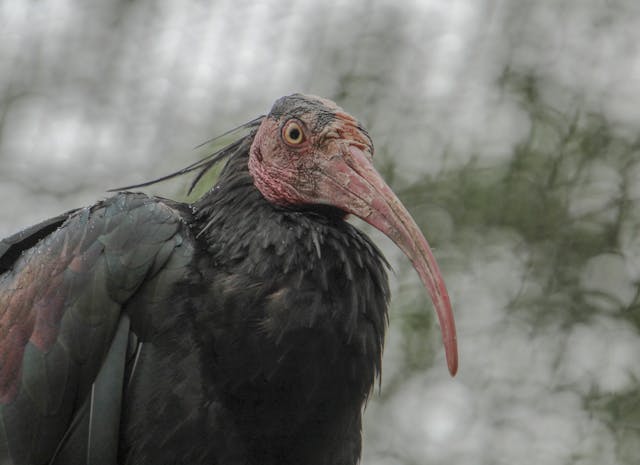I’ve always been fascinated by birds, but some are so elusive they feel like myths. What makes a bird rare? It’s not just their beauty—it’s tiny populations, picky habitats, sneaky behaviors, and us humans messing things up. I’m sharing my journey into why these feathered ghosts are so hard to find and how I’m hooked on chasing them. Get ready to be amazed by these rare wonders and tips to spot them yourself.
Vanishingly Small Flocks
I was stunned to learn about the Kakapo, a chubby, flightless parrot from New Zealand’s islands. With fewer than 250 left, these green fluffballs are super rare, thanks to rats eating their eggs. I read about rangers tracking every one on predator-free islands, where they only pop out a chick every few years. The Spoon-billed Sandpiper broke my heart, too—under 200 pairs exist, their spoon-shaped bills sifting Russian mudflats. Wetland loss and hunting have crushed their numbers.
The California Condor nearly vanished, down to 22 birds in the ‘80s. I’m amazed they’re back to 500, soaring over canyons, but lead poisoning still threatens them. These tiny flocks are a big part of what makes a bird rare, and I’m rooting for their comeback.
Super Picky Homes
Some birds are rare because they’re fussy about where they live. The Resplendent Quetzal blew my mind with its emerald tail, but it only hangs in Central America’s misty cloud forests. Logging’s shrunk their home, and I’d need to trek to Costa Rica to see one. The Philippine Eagle, a massive raptor, sticks to shrinking rainforests, hunting monkeys from huge nests. With under 400 pairs, they’re tough to spot.
The Christmas Island Frigatebird lives only on one tiny island, puffing red balloons to woo mates in mangroves. Mining’s trashed their spot, making them super rare. These picky homes are why some birds are rare, and I’m itching to visit their wild hideouts.
Sneaky Habits That Hide Them
I’ve learned some birds are rare because they’re masters at staying hidden. The Spotted Owl in Pacific forests blends into tree bark, hooting softly at night. Logging pushes them deeper into woods I can’t easily reach. The Corncrake drives me nuts, rasping “crex-crex” from European grass, but it sprints instead of flies, dodging me every time.
The Harpy Eagle is my dream bird, lurking in Amazon canopies, its huge wings silent as it snags sloths. Their massive territories mean I’d be lucky to spot one. These sneaky moves make birds rare, turning every sighting into a treasure hunt.
Stuck in Tiny Corners of the World
Geography plays a huge role in what makes a bird rare. The Seychelles Warbler only lives on a few tiny islands, once down to 26 birds. They’re up to 2,000 now, but I’d need a boat to their scrubby homes. The Palila, a Hawaiian honeycreeper, munches seeds on one volcano, with just 1,000 left thanks to invasive goats.
The Chatham Island Black Robin clings to New Zealand’s remote islands, barely 300 strong after a close call with extinction. These tiny ranges keep birds rare, making me dream of far-off adventures to find them.
Humans Making Things Tough
I hate admitting it, but we’re a big reason some birds are rare. The Ivory-billed Woodpecker might be gone, its swampy forests logged to nothing. I cling to rumors of sightings, but it’s a long shot. The Passenger Pigeon breaks my heart—billions once flew, but hunting and clearing forests wiped them out by 1914.
Climate change messes with the Red-cockaded Woodpecker, their pine forests hit by storms. I’m all for burns that save their nesting trees, but it’s an uphill battle. Our impact is a huge part of what makes a bird rare, and it’s on us to fix it.
Chasing These Elusive Beauties
I’ve got tricks to track birds that are rare. My 10×50 binoculars make Harpy Eagles pop in distant trees. eBird’s maps show me where Corncrakes hide, and Merlin’s app nails their calls. I use recorders for Spotted Owl hoots and dream of tours to Seychelles for warblers.
Early morning hikes or guided trips to Kakapo islands are my jam. Joining Audubon counts feels like helping science while hunting for Palila. These tools make birds that are rare less impossible to find.
Why I Care About These Rare Birds
Every rare bird, from the quetzal’s shimmering tail to the Kakapo’s waddle, tells a story of survival. Their scarcity screams we need to protect forests and islands. I plant native trees, cut my carbon footprint, and log sightings to help. Chasing birds that are rare has made me love nature more, and I’m begging you to grab binoculars and join the hunt. You’ll fall for these hidden gems, too.
